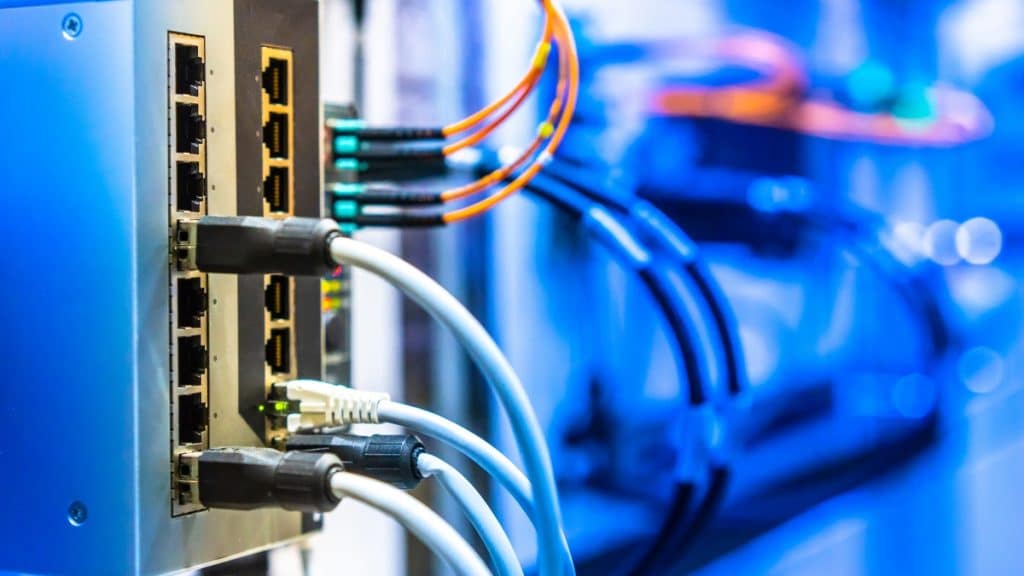The digital revolution is affecting the healthcare sector, where healthcare records are kept electronically, telemedicine is spreading more and more, and medical instruments collect more data daily. As technologies evolve, healthcare institutions must have adequate and dependable network infrastructure to maintain smooth service operations for patients. This blog will explore structured cabling and how it benefits the healthcare industry. We’ll explore how you can find the top structured cabling companies in New Jersey for the best wiring experience.
What is Low-Voltage Wiring in Structured Cabling?
Low-voltage cables encompass electrical wires carrying currents usually less than 50 volts. It is beyond the working voltage of home appliances and lighting (about 120 volts) around the house. In structured cabling, low-voltage cabling takes the lead in the network while data is transmitted from various devices like computers, phones, security systems, etc., which are also present in healthcare facilities.
These low-current cables are classified into several types and designed for specific uses. Category (Cat) cables like Cat5e and Cat6 are typical examples suitable for data transmission, while coaxial cables used for cable TV and internet connections are another.
Network cabling systems utilize low-voltage wiring for mostly the following reasons. Firstly, it is safer than electricity on high voltage lines with practically the risk of electrical shock. Moreover, low-voltage cables can transmit data signals with minimal signal degradation over long distances. In addition to this, the fact that the wires are standardized enables compatibility with the cabling system and results in simplified installation and maintenance.
Enhanced Network Performance
- Faster Data Speeds: The structured cabling systems deploy bandwidth-friendly cables, such as Cat6 or Cat6a, allowing a faster data transmission rate than traditional wiring solutions. As a result, patients can have their records more accessible, video conferencing can be conducted without delay, and the data from the medical equipment can be real-time.
- Reduced Latency: Latency means data is delayed in communication. Shielded wires in structured cabling minimize interference between the signals and guarantee a steady data flow, making the reply faster and the network performance better. This is crucial for emergency cases like remote surgery technology.
- Increased Scalability: A structured cabling system can adapt to these developments in a hospital where technologies change frequently, and novel devices are incorporated into the network. Adding more ports and servers can extend the network, and future growth will not require large-scale redesigning.
Improved Reliability and Security
- Reduced Downtime: This type of wiring uses meticulous design and installation standards so that potential cable faults and connectivity issues do not occur. It is equal to 100% network availability, providing smooth working of health applications with no interruptions to patient attention.
- Enhanced Security: Cable-structured systems may be provided with more security by having dedicated pathways and points of access. It also prevents unauthorized access to confidential patient data and ensures protection against potential data security threats.
- Better System Monitoring: Structured cabling offers the benefits of centralized monitoring and network performance management. Network administrators can quickly pinpoint the exact spot of connectivity faults, securing the system’s intactness and functionality.
Increased Efficiency and Cost Savings
- Improved Staff Productivity: With a steadfast and speedy network, health personnel can more easily access patient details, send lab reports, and communicate with colleagues. This saves time and transfers it to patient care procedures.
- Reduced Maintenance Costs: The structured cabling systems are engineered with durability in mind and cost 90% less than unstructured wires. It reduces the future costs associated with the management of the network.
- Simplified Moves and Changes: The standardized layout makes relocating departments or adding new equipment easier. With designated outlets and easy cable tracing, reconfiguration is streamlined, minimizing downtime and additional costs.
Specific Applications in Healthcare
- Electronic Health Records (EHR): Digitally structured cabling offers a fast and secure pathway for authorized devices to access patient records throughout the facility.
- Telemedicine: High-speed connections can provide video conferencing solutions for collaborative consultations, tele-medical supervision, and other purposes.
- Medical Imaging: Structured cabling facilitates the movement of sharper medical imaging beams and other services from diagnostic equipment like X-ray machines and MRI scanners.
- Patient Monitoring Systems: The equipment vital sign monitors, as well as others, can precisely and quickly transfer data, such as instructions, in real-time.
- Building Automation Systems: Structured cabling provides the desired structural framework for integrating a building automation system that can control HVAC, lighting, and access.
Choosing Top Structured Cabling Companies in New Jersey
For healthcare facilities, selecting a reputable structured cabling company is crucial. Look for companies with experience in healthcare environments, certified installers, and a proven track record of delivering high-quality work. Here are some additional factors to consider:
- Experience: Look for companies with a long and trustworthy track record of successfully implementing structured cabling in a medical facility crew environment.
- Qualifications: Develop measures for expertise and employ certified and up-to-date technicians with the latest industry standards.
- Services Offered: Choose the company with the most vital services, encompassing design, installation, testing, and after-sales maintenance.
- Warranty and Support: One of the best ways to evaluate a company is to choose one that offers a detailed warranty on its work and will always be there to help you solve future problems.
Conclusion
Healthcare facilities can be future-proof by investing in a well-designed structured cabling system that evolves with new technology trends and increasing data demands over time. The result is quicker access to patient medical records, seamless telemedicine consultations, and real-time data delivered from devices like medical equipment—all of which should lead to higher-quality patient care and operational efficiency.
A leading provider of structured cabling solutions with a reliable track record in healthcare institutions is the key to success in the future healthcare delivery system. Their team offers complete and organized cabling services, including planning, installation, testing, and maintenance. Working with a trusted cabling contractor grants your healthcare facility the ability to achieve lasting performance through a reliable support network.
